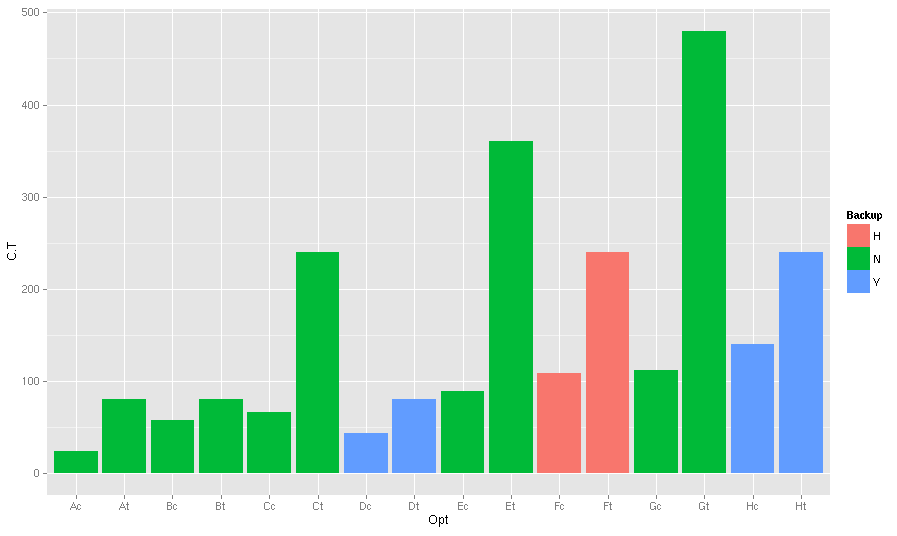1. Introduction
In the following, Primary or 1°; refers to the system in the OITCD; Secondary or 2° refers to the backup system in either ICS or CalIT2.
Some Abbreviations and Explanations:
GPFS = IBM’s General Parallel File System
FHGFS = Fraunhofer File System
MDS = MetaData Server, required for Fhgfs
IB = Infiniband
QDR = Quad data rate IB (41Gbs)
FDR = Fourteen data rate IB (54Gbs)
10GbE = 10Gb/s ethernet
SMF = Single Mode optical Fiber
MMF = Multi-mode optical Fiber
I/O = Input / Output
A Storage Servers is a generic storage chassis with room for 36 disks each. They can be incrementally populated in chunks of 12 disks each (a brick) to provide 40TB for each 12-disk chunk.
Distributed filesystems can be increased in size by providing more storage bricks. Their aggregate bandwidth can be increased by adding more chassis'. ie adding another chassis allows I/O at 2X the max I/O to one, 3 chassis allows 3X the I/O of one chassis. Hence the reasoning to initially provide 2 underpopulated chassis' in (B) below instead of filling the 1st.
The Opt labels (x-axis) refers to the the Option letters in parens below. The subscript refers to wither their cost or terabytes. ie the Et bar refers to the size in TB of Option (E) below. The bars are colored by whether the configuration is one with a Full Backup (Blue), No Backup (Green), or Half Backup (Red). The Y-axis C.T denotes both Cost in $1000 or TB.

Listed in generally increasing cost.
2. (A) 80TB 1°; no 2°, 1 chassis (~$24K)
-
1 storage node w/ 80TB usable (2 bricks of 40TB each in 1 server) - $19K
-
room in chassis for 1 more brick of 40TB.
-
no bandwidth scaling (single chassis)
-
integrated MDS with storage server
-
no 2°
-
single small IO node (~$5K)
-
no IB switch required.
3. (B) 80TB 1°, no 2°, 2 chassis' (~$50K)
-
2 storage nodes; w/ 80TB usable (1 brick of 40TB in each server) (~$30K)
-
space in each server for 2 more bricks as needed (240TB total)
-
2X bandwidth of (A).
-
separate Storage and MDS (~$7K)
-
no 2°
-
single IO node (~$5K)
-
requires IB rack switch (~$8K)
4. ( C ) 240TB 1°, no 2° (~$66K)
-
2 storage nodes; w/ 240TB usable (6 bricks of 40TB each) (~$46K)
-
2X bandwidth of (A).
-
both storage nodes fully populated with disks
-
otherwise like (B) ($7K + $5K + ~$8K)
5. (D) 80TB 1°, full 2° (~$44K)
-
no bandwidth scaling with single chassis
-
like (A) (~$24K) but also:
-
2 x 10GbE & optical interfaces (~$15K)
-
SM fiber from OITDC to ICSDC (~$5K)
6. (E) 360TB 1°, no 2° (~$89K)
-
like ( C ) (~$66K) but w/ another fully populated storage node (~$23K)
-
2X bandwidth of single chassis.
7. (F) 240TB 1°, partial 2° (~$109K)
-
like © (~$66K), but also
-
1 full storage node (120TB - provides re-charge backup of 1/2 of 1°), w/ integrated MD server (~$23K)
-
no IB rack switch req’d but will be req’d if increase # of storage nodes.
-
2 x 10GbE & optical interfaces (~$15K)
-
SM fiber from OITDC to ICSDC (~$5K)
8. (G) 480TB 1°, no 2° (~$112K)
-
like (E) ($89K) but w/ another fully populated storage node ($23K)
9. (H) 240TB 1°, w/ Bandwidth scaling; w/ full 2°*(~$140K)*
-
like (F) (~$109K) but also:
-
1 more storage node to provide 240TB total 2°. (~$23K)
-
1 IB rack switch (~$8K)
10. My recommendation
In terms of progression, the best way of doing this is to install a Primary storage stack in the OITDC, get the interfaces up and running to make sure it’s popular. Once the system has been shown to be useful and popular and there is a demand for recharge backup, then offer the Secondary/backup as an option. At that point there might be Departmental pressure to both provide it and to pay for it.
However, if we do provide a simultaneous 1° and 2° and there dos not seem to be the institutional support for the 2° geo-replicate, we can easily merge the hardware back into the 1° storage system to increase the 1° storage.